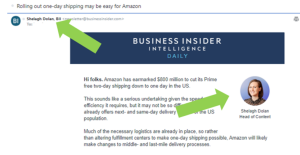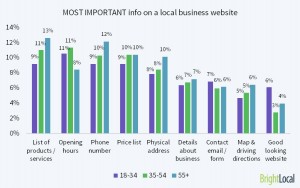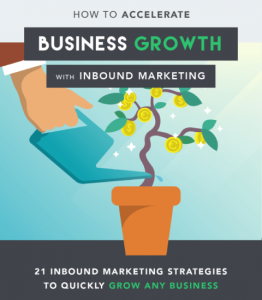There’s no secret that online store is one of the best ways for boosting sales and getting more customers. And no secret at all that not every e-commerce website gains popularity and brings its owner sales and traffic. There is many reasons for this and the choice of a platform is one of those factors that defines a website success.
Of course, you can hire a designer to create your e-commerce website from scratch. Or you can ask the designer to create it based on one of the most popular and easy-to-manage CMS platforms. Thus, you save your time and money and still get a great result.

Finding the best possible platform for your business is not an easy task. You should make a research to find what platforms can be a good base for your e-commerce website. But in most cases at the end of this research you’re getting confused even more because of the number of platforms and the services they offer. How to choose the best one that meets all your requirements? Below we will check out the most popular ones and define their strengths and weaknesses.
Characteristics of CMS
But first let’s define what characteristics a good e-commerce platform should have and what to pay attention to when you choose a platform for your website.
Price. For most users it’s one of the most important factors. That’s why they dig into pricing plans offered by CMS platforms and try to save wherever it’s possible. But let’s face it: you are to run your business, invest in it the most of your energy and time. Then why do you think those 3-4 bucks will save your budget?
When considering the pricing, you should take into account what features do you get for those money on different platforms. Some CMSs require monthly payments, others will charge you once for the entire package and offer you regular updates for free. It’s up to you choosing the best pricing option for the business you run.
Ease of Use. You can ask a designer to build a website for you on any platform you choose or try to make it yourself. But in any case, you will be using it often, adding content and managing your sales. You may choose a CMS handful of features, but if you can’t use them – what’s the difference? Finding a platform that is easy to use is essential for a business owner.
Support. High-quality and easily accessible customer support is essential for a good e-commerce platform choice. If you decide not to use web designer services for creating your website, you will definitely need some help from time to time. The best support offer you may have – is a free 24/7 support available on phone, live chat or email.
Templates. Custom-made design is a great choice, as I already said. But you can significantly lower your expenses if you chose a template that you (or your designer) can customize for your needs. Pretty every e-commerce platform offers ready-made templates for creating a website. Choose one with an opportunity to customize it entirely and easily.
Hosting. Many modern CMS platforms offer hosting services to their clients. This means you don’t have to look for a hosting provider for your future website like in case with self-hosted platforms. The drawback: you should pay pretty high monthly fee for hosting without an opportunity to change provider.
Responsiveness. One of the most important factors today. E-commerce website should definitely be mobile and responsive to allow people that use mobile devices shop easier and at any time. If the platform doesn’t offer you responsive website version, it may be the reason to look for another service provider.
These aspects are the main ones for paying attention when choosing the right platform for your e-commerce project. Now let’s check out a few the most interesting and promising CMS platforms for creating e-commerce websites.
WooCommerce

In fact, it’s not exactly a platform, but a plugin for WordPress, the most popular CMS platform for now. If we speak about DIY websites, WordPress justly holds the first place. It allows creating easy-to-manage websites from tons of beautiful paid and free templates. You can use WooCommerce-optimized themes to provide the entire website and your store with the same design.
Since WooCommerce is the open source software, you are not bound with monthly fees. You pay once for the theme you choose for your website and then customize it as you like. And customization is really one of the strongest points for this platform. You can tweak all the features like you do it inside the WordPress including all available plugins and services.
Use responsive themes to engage mobile device users to your store. One of the best things about WooCommerce is that you can easily integrate blog into your e-commerce website what makes it more open to potential customers. Remember, that WordPress is a self-hosted CMS, so you should carefully consider your hosting provider.
Magento

Magento fast became one of the most powerful and famous tools for creating e-commerce websites. Since Magento 1.9 was released in early 2014, it has increased its community greatly and the future release of 2.0 version is expected to raise this number.
Magento is especially popular among larger companies, but even small business can benefit from it… if they manage to puzzle out its admin panel. The truth is that Magento, despite its popularity and feature-load service, is not user-friendly at all. It seems to be more a platform created by developers for developers. Learning path is quite long and web design amateur will be hardly able to use all the features to customize the website to the full extend. Many features require complex coding knowledge so you must better hire a professional developer to complete your online store.
Another issue you can spot about Magento is its heaviness compared to other platforms. Even if your hosting meets all requirements for servers and disk space, you can notice a significant slow in your website performance.
As for the rest, Magento offers a really powerful solution for business being mobile- and SEO-friendly. It is secure with no third-party access, so your and your customers’ data will be completely safe.
MotoCMS E-commerce Plugin

A relatively new platform that gains popularity due to its latest product version MotoCMS 3.0 now offers an E-commerce plugin for anyone who wish to run an online store. Like Magento, it implements a WYSIWYG editor for website customization. But MotoCMS has much friendlier UI that allows easy website customization and e-commerce plugin setup even to a high-tech newcomer.
Unlike free open source services, you should purchase MotoCMS e-commerce plugin separately, additionally to a template of choice. The good thing is that you pay for it once, with no monthly fees in future (updates are free). With the plugin you get not only beautiful design that you can customize yourself, without resorting to professional web developers services. You get a high-quality 24/7 tech support what makes customization even easier.
The plugin has all the necessary functionality to create a cool-looking professional online store including product and customer management, design tweaks and SEO settings (keywords and meta-tags can be added to all products). The best thing about it that you don’t have to set up your website for mobile devices – the team has already done it to all its templates. You should keep in mind that MotoCMS is a self-hosted solution, so consider a good and reliable hosting to store your site.
Shopify

One of the best-known solutions for e-commerce, Shopify is used by big companies as well as by smaller and local online retailers. Most smaller brands praise Shopify for its ease of use, low price plans (from $ 29 per month), and beautiful designs.
However, larger stores often look for more developed services and more advanced functionality that Shopify can’t boast. Being more focused on e-commerce options it is pretty limited in managing blog and similar forms of content. The checkout page also offers not so many options you can change. In fairness it must be said that Shopify provides its clients with the widest range of various add-ons and apps you can install on your online shop to extend functionality.
If we speak about the prices, I must admit that Shopify offers some of the lowest pricing plans. But you will be paying it a transaction fee for the credit card processor use. As for the rest, it is a nice-looking and easy-to-manage service that will help you manage your small store without exterior help.
Bigcommerce

Most users note the close similarity between Bigcommerce and Shopify. But the former seems to lack the freedom of control over functionality that Shopify offers. Like Shopify, Bigcommerce offers services to various business sizes – from giant retailers to private entrepreneurs. Its prices start around $ 30 per month that is also not too far from Shopify’s fees.
As for the rest, there’s no too big difference in features and add-ons of both platforms. There are some features that Bigcommerce may lack but you’ll find there other services you cannot get with Shopify. Thus, you can get the full analytics about your top customers and their interaction with your website. It opens for you more opportunities in customers engagement like rewarding the most loyal customers and improving the overall customer experience.
Since Bigcommerce is a hosted solution, it fits perfectly to small business. Clean and simple admin panel also makes it easier to manage to non tech-savvy people.
SpreeCommerce

Not the most famous platform for most users, but it has a good potential. Small and local business with revenues under $ 5 million are the target group of SpreeCommerce. However some large retailers may be interested in using this platform for their projects.
SpreeCommerce has rather complex functionality and advanced options will sometimes puzzle even experienced developers. Thus, categorization of taxes includes such terms as taxonomy and taxon what may be confusing for most users. On the other hand, such detalization allows setting up wide groups of taxes or stock locations what makes SpreeCommerce a good solution for larger retailers.
Professional features and advanced options will be great for developers who create websites for their clients rather than for those who just start their business and paddle their own canoe. Spree is built on Ruby on Rails and offers the entire documentation for developers to create a great website.
CMS-Powered Websites Examples
CMSs are so popular and powerful today so many big brands and large retailers use their functionality for their sister projects or separate online stores. It saves those retailers time between creating and launching a website; saves budget for designing and developing many different projects; saves efforts for running it.
Reasons for choosing a certain platform can be different for different projects. In most cases it’s design (the choice of templates available that suit the idea of the website) and options the platform offers that allow retailers to get the necessary layout and functionality of the website.
Thus, most big retailers, who choose Magento, use professional developers’ services to achieve stunning results for their websites. It’s no wonder that a great number of such websites are built on Magento Enterprise, more advanced version that is aimed at website developers. Like the Nicole Miller’s website. Here you see a combination of a cool design (user-friendly layout, responsiveness etc.) with great functionality.

WooCommerce is not so popular among large retailers and famous brands. But it is loved by smaller to midsize companies and pet projects for its ease of use, low prices, collection of add-ons, and familiar admin panel of WordPress. Availability of free or low-price templates also plays a great part in WooCommerce popularity. Yousli project uses WordPress for the entire website and WooCommerce functionality for the Shop.

Many mid-size brands and smaller shops choose BigCommerce for their websites. It offers a great selection of HTML templates that are easily customizable. Retailers love that fact that websites can be optimized for Google, Bing and Yahoo what broadens their marketing opportunities. And, of course, like with other platforms, website owners get many features that allow website customization as well as its marketing promotion. Thus, DiBruno cheese store uses the entire functionality of BigCommerce including blogging and social networking.

Conclusion
Whether you’re building a small store or a large online shop, you can make use of any of these solutions above. Consider your budget and think whether you are likely to pay for a template once or be charged every month; choose what’s better for you – a hosted or self-hosted platform etc. But remember: switching between platforms when you have a fully setup online store is a real mess. So choose wisely.
Digital & Social Articles on Business 2 Community(56)
Report Post





